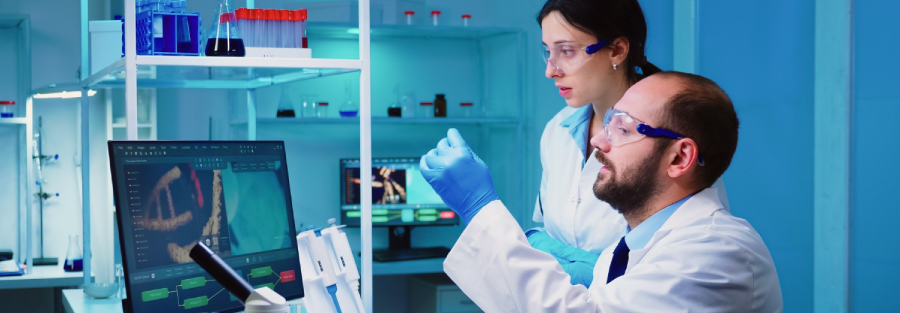
CDMO
The drug development lifecycle is the complete journey of a pharmaceutical product-from its initial discovery through availability on the market and beyond. Each stage of this lifecycle is essential to ensure the drug is effective, safe, and meets regulatory standards. However, this process is long, complex, and resource-intensive.
This is where CDMO solutions (Contract Development and Manufacturing Organizations) come into play. By integrating drug substance and drug product capabilities, CDMOs simplify the drug development process, reduce time to market, and improve cost efficiency. These integrated solutions are especially vital for small to mid-sized pharmaceutical firms and biotech startups seeking scalability without the need for massive infrastructure investment.
Phases and Stages of Drug Development
Understanding the drug development phases helps pharmaceutical companies and their partners align on expectations, timelines, and resource needs. These stages can be grouped into five core phases, each with its own challenges and regulatory considerations.
Step 1: Discovery & Development
The journey begins with the discovery of a potential new drug compound. This phase includes:
- Target identification and validation
- High-throughput screening of chemical or biological entities
- Hit-to-lead and lead optimization
At this stage, thousands of molecules may be tested, but only a few progress based on pharmacological potential, toxicity profiles, and manufacturing feasibility.
Integrated CDMO partners can support this step by providing early analytical testing, route scouting, and small-scale synthesis capabilities to accelerate lead compound selection.
Step 2: Preclinical Research
Once a candidate compound is selected, preclinical testing is performed to evaluate safety and efficacy through:
- In vitro (test tube or cell culture) studies
- In vivo (animal) studies
- Pharmacokinetics (ADME: Absorption, Distribution, Metabolism, and Excretion)
- Toxicological profiling
This step assesses whether the drug is safe enough to progress into human trials. CDMOs with in-house toxicology support and formulation development capabilities play a critical role in designing scalable, reproducible methods for upcoming clinical testing.
Step 3: Clinical Drug Development Process
Human clinical trials are conducted in three phases:
- Phase I: A Small group of healthy volunteers or patients to assess safety and dosage
- Phase II: Larger group to evaluate efficacy and monitor side effects
- Phase III: Broad patient population across multiple sites to confirm effectiveness, monitor adverse reactions, and compare with existing treatments
Throughout this drug development process, data is collected for regulatory evaluation. The seamless transfer from preclinical to clinical trial material manufacturing is where integrated CDMO services demonstrate maximum value.
CDMOs that combine drug substance synthesis, formulation development, analytical validation, and packaging streamline the transition between these drug development phases, minimizing delays and compliance risks.
Step 4: Regulatory Review & Approval
In this phase, a comprehensive dossier is submitted to regulatory authorities worldwide, such as the EMA in Europe, PMDA in Japan, CDSCO in India, or MHRA in the UK. This includes:
- Results from all preclinical and clinical trials
- Information on the drug’s mechanism of action
- Manufacturing process and quality controls
- Risk management and pharmacovigilance plans
Approval hinges on the thoroughness and quality of documentation, as well as the robustness of manufacturing processes.
Integrated CDMOs with global regulatory experience support this phase by providing validated data, managing compliance audits, and facilitating gap-free submissions.
Step 5: Post-Market Monitoring
After approval, a drug enters the market but remains under continuous evaluation through:
- Pharmacovigilance programs
- Periodic safety update reports (PSURs)
- Ongoing manufacturing inspections
- Market feedback and real-world evidence
Post-market surveillance ensures that any long-term or rare side effects are captured and that the drug remains safe for patients.
Some CDMOs offer lifecycle management services such as formulation optimization, line extensions, or scale-up for new markets. These value-added capabilities extend the collaboration beyond launch, supporting sponsors throughout the full drug development lifecycle.
Final Thoughts
Navigating the drug development lifecycle is complex, but the integration of CDMO services can significantly ease this journey. By offering a consolidated platform that combines drug substance development, clinical trial support, regulatory documentation, and commercial manufacturing, integrated CDMOs eliminate silos, reduce risk, and enhance speed to market.
For any pharmaceutical company-especially those with limited internal capacity-partnering with a trusted CDMO solution can be the smartest strategic move to accelerate innovation and deliver transformative therapies to patients worldwide.






